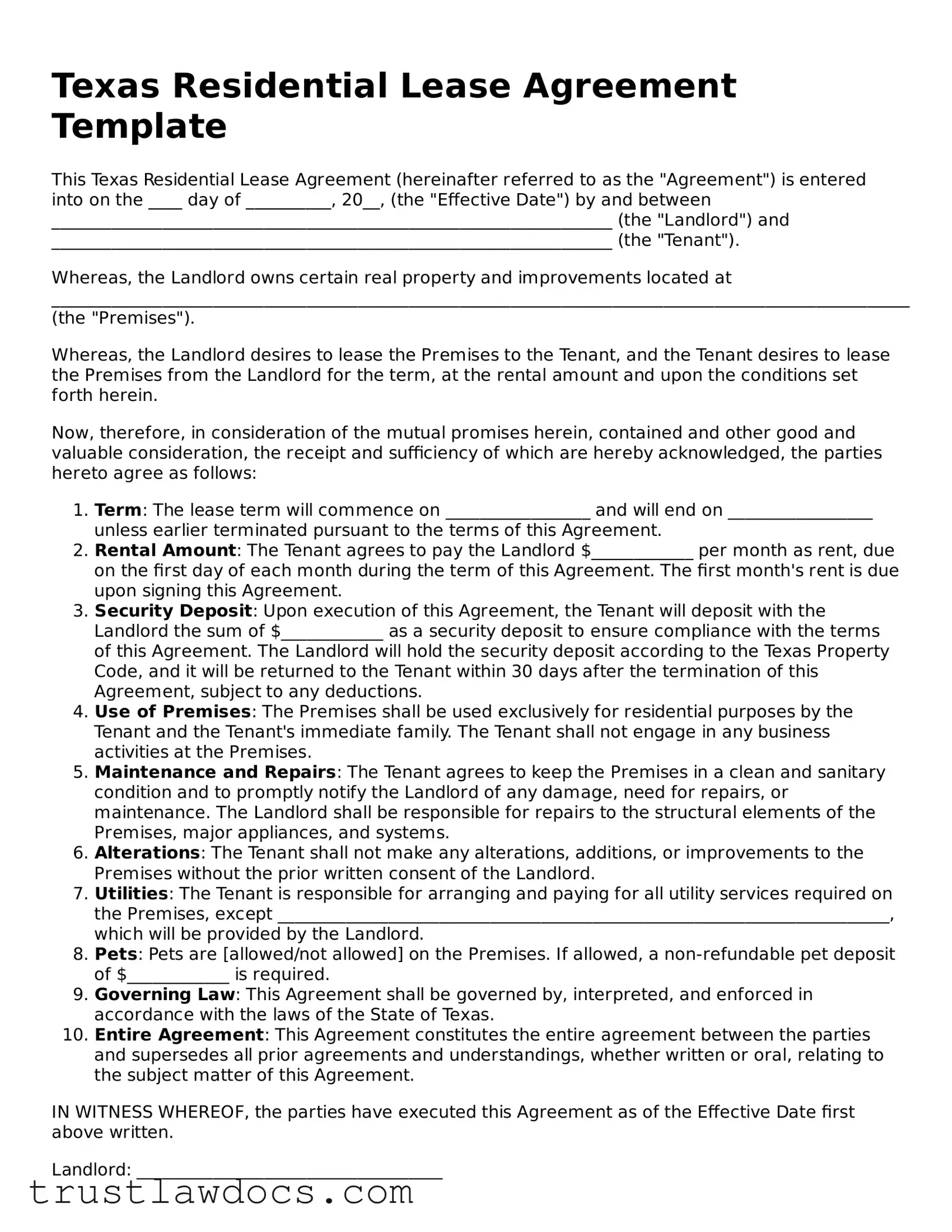One common mistake made when filling out the Texas Residential Lease Agreement form is the failure to accurately list all parties involved. This contract is not just between the landlord and a single tenant; it often involves multiple tenants, such as in the case of roommates. Ensuring each tenant's name is properly documented is paramount, as it clarifies who is legally responsible for adhering to the terms of the lease. This oversight might seem minor, but it can lead to complications in enforceability and responsibility.
Another error occurs with the incomplete or inaccurate description of the premises. This section of the form requires more than just an address; it demands a detailed delineation of the property being leased, including any outdoor spaces or storage units explicitly included in the lease. Details matter here. Forgetting to list a storage unit or parking space can lead to disputes about what the tenant has rights to access and use.
A third mistake is not specifying the term of the lease clearly. The lease should state not only the start date but also the exact end date, which is crucial for determining when the tenant must vacate the property or negotiate a renewal. Ambiguities in lease terms can create confusion, potentially leading to legal disputes over what was agreed upon.
Underestimating the importance of documenting the condition of the property before move-in is yet another commonly overlooked step. Tenants and landlords often neglect to record existing damages, which can later complicate attempts to sort out what damages, if any, the tenant is responsible for at the end of the lease. This exercise, although it requires effort upfront, protects both parties from future disagreements over security deposits and repairs.
Often, individuals neglect to read and understand the clauses regarding lease termination and renewal. Confusion or misunderstandings about the process for renewing the lease, or the penalties for breaking the lease early, can lead to stressful situations and possible financial penalties. Both parties should fully understand these terms to prevent surprises down the line.
Inaccuracies in the outlined rent amount, payment methods, and due dates are surprisingly common. Misunderstandings or typographical errors in this area can lead to disputes and financial discrepancies. It's crucial to double-check these figures and terms to ensure clarity and prevent future issues over payment.
Failure to include or properly describe stipulations about pets, alterations to the property, and subletting policies is another frequent oversight. These terms set clear boundaries for what is and isn't allowed on the property, safeguarding the landlord's investment and ensuring the tenants have a clear understanding of their limits.
The neglect of specifying maintenance responsibilities can also lead to conflict. The lease should clearly divide the responsibilities for everyday upkeep and larger maintenance tasks between the tenant and landlord. Without this clarity, disputes can arise over who is responsible for repairs or maintenance issues.
One more commonly overlooked detail is the failure to include required legal disclosures, such as lead-based paint disclosures for older properties. These are not only informative but are also mandated by law, and failing to include them can lead to legal repercussions for the landlord.
Finally, a significant mistake is not securing signatures from all parties involved, including all tenants and the landlord. Every adult living on the property should sign the lease to ensure that everyone is legally bound to its terms. Missing signatures can lead to challenges in enforcing lease terms and holding parties accountable.
